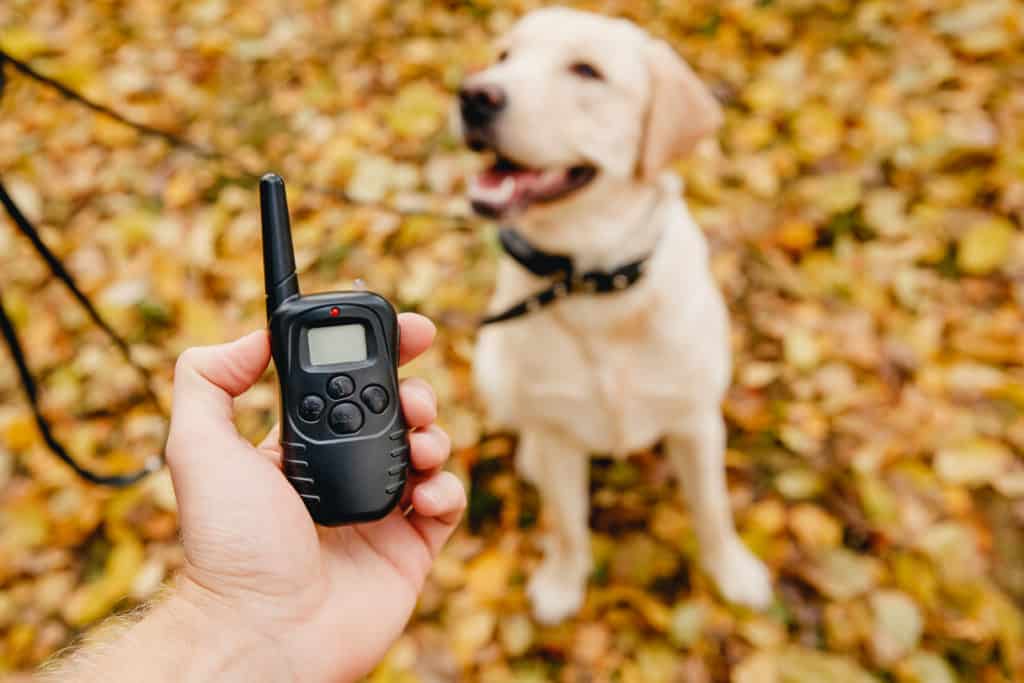Uncategorised
Do Electric Collars Work for Dogs?
Do Electric Collars Work for Dogs?
Electric dog collars are one of many training methods that have been designed to stop your dog exhibiting unruly behaviours. This could range from excessive barking to aggression toward other dogs.
This blog explores whether electric collars can actually work for training dogs.
What are electric dog collars?
Electric dog collars – also known as shock collars or e-collars – are controversial ‘training’ devices worn around a dog’s neck. Controlled by the dog’s owner, they can deliver anything from a tickling sensation to a painful shock each time the dog misbehaves. They are aversive collars, that is, they use physical pain or discomfort to prevent undesirable behaviours.
How do electric dog collars work?
Electric dog collars use something called electric stimulation. A radio signal is sent via a remote control to deliver an electrical shock through metal contact points that are placed in the collar. The shocks vary in intensity and are controlled by the human.
The training method uses negative reinforcement techniques to encourage good behaviour and compliance with demands. By delivering a brief shock each time the dog misbehaves, it is assumed the dog will eventually come to associate the unpleasant feeling with the negative behaviour. This, in turn, prevents the undesirable behaviour.
Shock collars are also used for invisible fencing systems which are designed to prevent dogs from straying. Wires are positioned around a desired perimeter (either underground or above ground) acting as a fence. Each time the dog gets too close, it will receive a small shock through the collar.
Are electric dog collars cruel?
It is hotly contested whether electronic dog collars can ever be ethical. Electric dog collars are widely opposed in the veterinary community as well as by animal welfare charities such as the RSPCA, the Animal Behaviour and Training Council and the Kennel Club. Research has shown that not only are shock collars no more effective than alternative training methods, but they can also cause stress for the dog. Behaviour may be suppressed temporarily but as the dog can’t understand why it is being shocked, it can cause immense distress leading to anxiety.
It has also been found that when shocked in this manner, some dogs can develop negative connotations with humans or other experiences. This has the potential to lead to fearful or aggressive behaviour toward you or other animals.
In addition to this, shock collars have been linked to potential misuse (delivering shocks incorrectly) and abuse (delivering shocks to harm the dog) by trainers. Despite this, there are currently no regulations on sales of remote training collars.
Are electric dog collars legal in the UK?
Despite a promise by the UK government to ban electric dog collars back in 2018 – as well as campaigns from several animal welfare charities – the controversial training devices remain legal in England and Scotland.
The Electronic Collar Manufacturers Association (ECMA) delayed legislative action by challenging the decision and this was later dismissed by the Court of Appeal. Since then, the ban is yet to be implemented but it is expected they will be made illegal in the coming years.
Shock collars used for containment purposes (invisible fence systems) will not be banned. The government found these systems can “avert other risks to animal welfare”. In other words, incidents where dogs (or cats) may stray into potentially dangerous environments can be prevented. This remains under review. In Wales, electric dog collars have been illegal since 2010.
Do vets recommend shock collars?
The British Veterinary Association (BVA) agree that electrical collars can have a negative impact on the overall welfare of animals. This is based on research that has shown these devices can cause pain and unnecessary suffering for dogs and cats. They welcome the decision made by the government to ban electric collars and advocate positive training methods such as encouragement and rewards.
The BVA accepts the governments decision to allow the continued use of invisible fencing systems. However, they believe sales of these systems should be regulated and any potentially adverse effects be made clear to animal owners and consumers. These systems should be last resort and only fitted by professionals who have had appropriate training.
What is the best method of dog training?
Positive reinforcement training is seen to be the safest and most effective way to train dogs. This method rewards good behaviour instead if punishing bad behaviour. If your dog behaves well, reward them with a treat. Eventually, your dog will come to associate good behaviour with good things. This method is favoured by vets and animal welfare charities.
You can find more information on how to train your dog using positive reinforcement techniques here.


